Got sticker shock at the supermarket? Get used to it: According to the U.S. Department of Agriculture, food prices are expected to rise 3.2% overall in 2025, with noticeably higher price increases in specific categories.
For example, the price of beef/veal is expected to rise 5.2% in 2025 after already going up 7.6% in the previous 12 months (ouch). Egg prices are predicted to increase 57.6%, fruits 11.6%, and milk 10.9% in 2025.
Luckily, food is the most hackable category in your budget. After all, you probably can’t get reduced rent or a lower car payment just by asking. What you can do is get serious about inflation-proofing your pantry.
Shoppers Who Know Their Dimes from Their Dollars

Image Credit: Shutterstock.
Tired of reading the same run-of-the-mill shopping hacks (Buy on sale! Use coupons!) over and over? Me too! As a longtime frugal shopper, I know how to stretch a food buck. I’ve also curated some great tips from some fellow frugalists.
The following tactics mix strategic shopping tactics with out-of-the-box answers to filling the cupboard. Use them to stock your shelves without breaking the bank.
Food Banks and Government Food Benefits
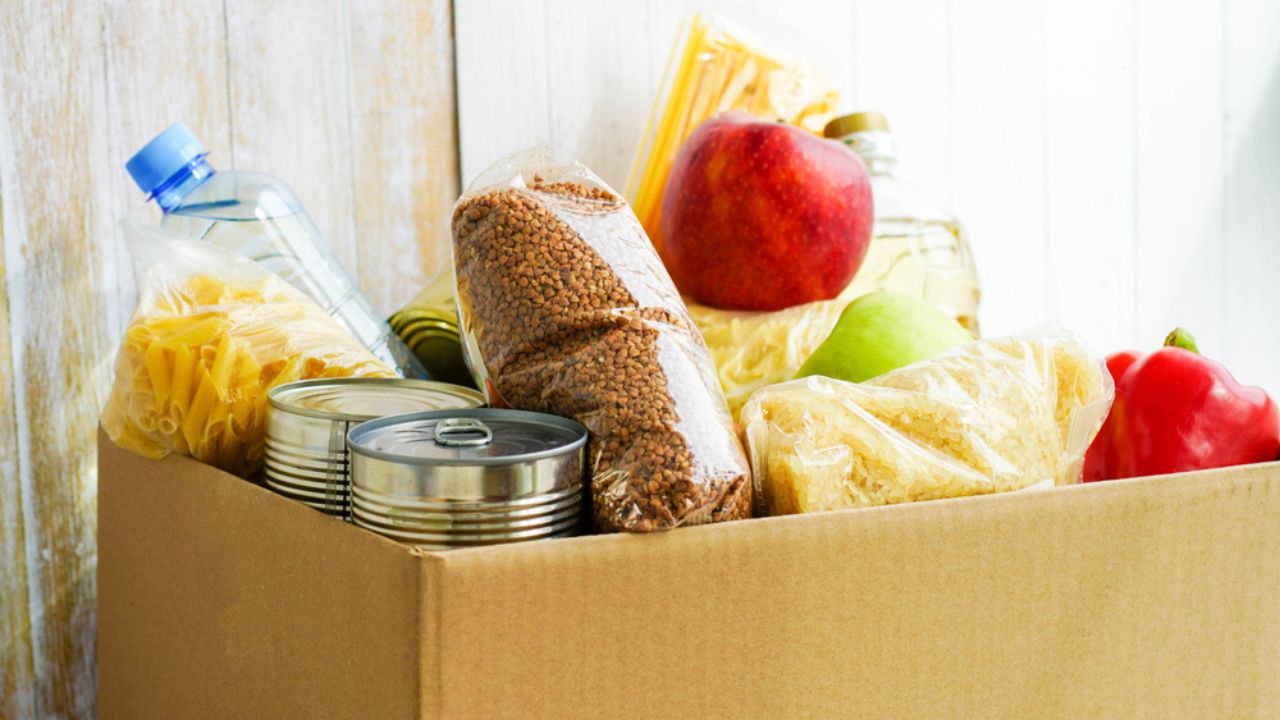
Image Credit: Shutterstock.
Obvious, right? But this might be brand-new information if you’ve never been short on funds.
The U.S. government provides SNAP benefits (formerly known as food stamps) or WIC benefits (for pregnant women and parents or guardians of young children) to eligible residents. Follow the links to learn if you qualify.
A nonprofit called Feeding America has a search tool to help you find food banks in your region. You should also do an online search for “food banks near me,” since not all food pantries are affiliated with Feeding America. Finally, dial 2-1-1 (a health and social services helpline) and ask for food pantries in your area.
Buy Nothing Facebook Groups
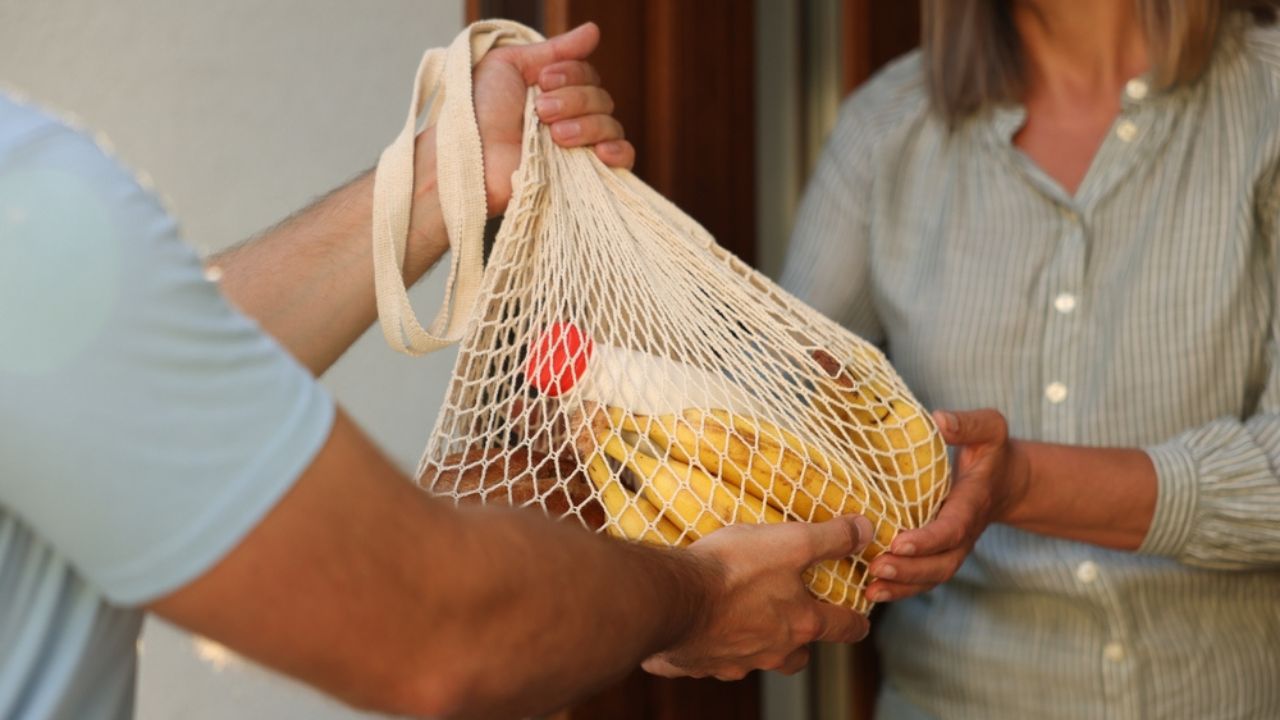
Image Credit: Shutterstock.
A nonprofit called the Buy Nothing Project celebrates the “gift economy”: the no-strings-attached sharing of goods and services. One part of this mission is the Buy Nothing Facebook group, a way for members to offer (or ask for) a wide variety of gifts, including food.
Not all groups are created equal, obviously. Still, you might be offered things like backyard produce, the results of a “pantry cleanout,” extra holiday treats, or items a member tried but didn’t like (Costco-sized bags of dried fruit, anyone?).
My BN group has yielded us treasures like bread flour, yeast, canned goods, sugar, rice, protein powder, beans, pickling salt, and coconut. Bonus: Neighbors help neighbors in other ways, such as by giving rides to work or walking a sick person’s dog.
Look for a group in your area at https://buynothingproject.org/find-a-group/.
Scratch and Dent Grocers
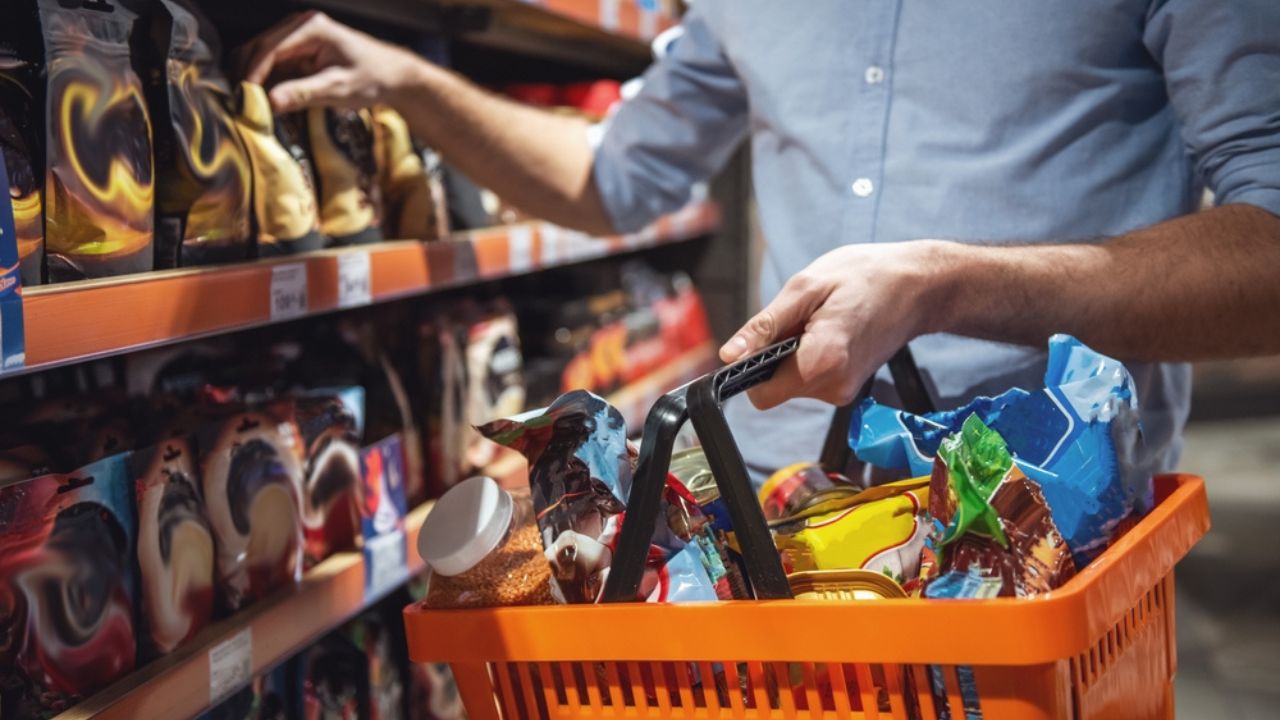
Image Credit: Shutterstock.
Also known as “salvage grocers,” these stores sell a mix of “closeout, overstocked, and discontinued items that come with significant discounts,” according to The Freebie Guy.
“The thrill of shopping at these outlets lies in the unexpected treasures you might find – products you didn’t even know you needed, all at a fraction of their regular price,” the writer shares. The discounts can be anywhere from 50% to 75% off.
About those scratches and dents: According to Foodie.com, it’s a good idea to “double-check cans for bulges or exaggerated dents, which can indicate the presence of bacteria.” Totally worth it, though, for the “extraordinary savings” found in these stores.
TFG has compiled a state-by-state list of salvage grocers. You should also search online for “salvage grocers near me.”
Ethnic Markets
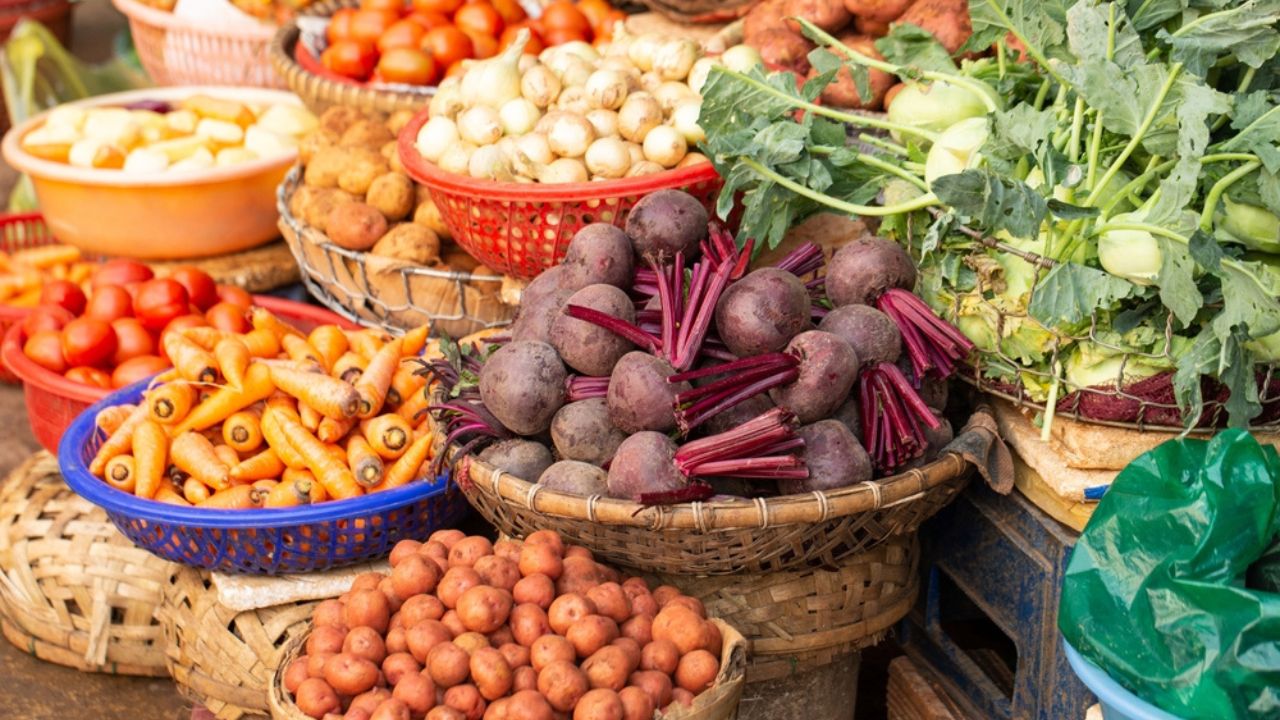
Image Credit: Shutterstock.
Stores dedicated to the cuisines of Asian, Hispanic, Middle Eastern, and other cultures can broaden your culinary horizons while shrinking your grocery budget. In addition to culture-specific foods, these markets are full of items that everyday cooks use: dry beans, pasta, rice, sauces, and extensive selections of meat, seafood, and produce.
A typical ethnic market focuses on “grocery items that are filling, usable in a number of ways, and cost-friendly,” writes Gary Guthrie of ConsumerAffairs.com. “Buying a 10-pound bag of rice at an Indian grocery store is likely to beat any price point that Costco comes up with.”
Pro tip: If it would take you forever to finish a 10-pound bag of rice (or beans, or whatever), split the purchase with a friend or friends.
Clearance Racks – Everywhere
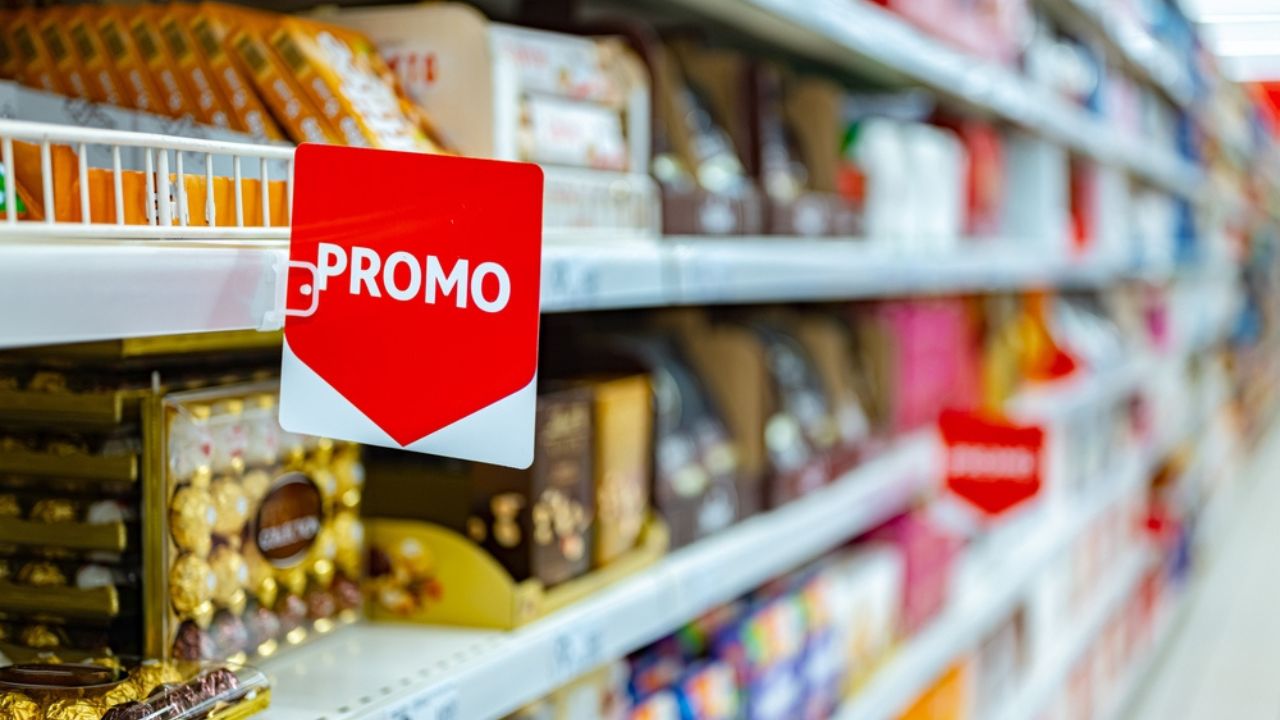
Image Credit: Shutterstock.
Most people have seen supermarket clearance (or “last chance”) racks or tables. Managers send close-dated items there, along with leftover Peeps or chocolate Santas that didn’t sell during the holidays. But that’s not all you’ll find, according to Jessica Fisher of TheKitchn.com.
“I’ve found specialty spices and sauces, interesting prepared foods, and all manner of baking ingredients, cereals, canned goods, and sweets,” Fisher notes, at up to 75% off their regular cost.
Priced-to-sell food can be found outside the supermarket, though. Clearance racks in big-box stores, drugstores like Walgreens and CVS, convenience stores, and even office supply stores could yield surprising bargains. I once scored a 30-ounce can of coffee at Office Depot for just 84 cents – and no, I couldn’t believe it, either.
Similar to clearance tables are…
“Manager’s Special” Deals
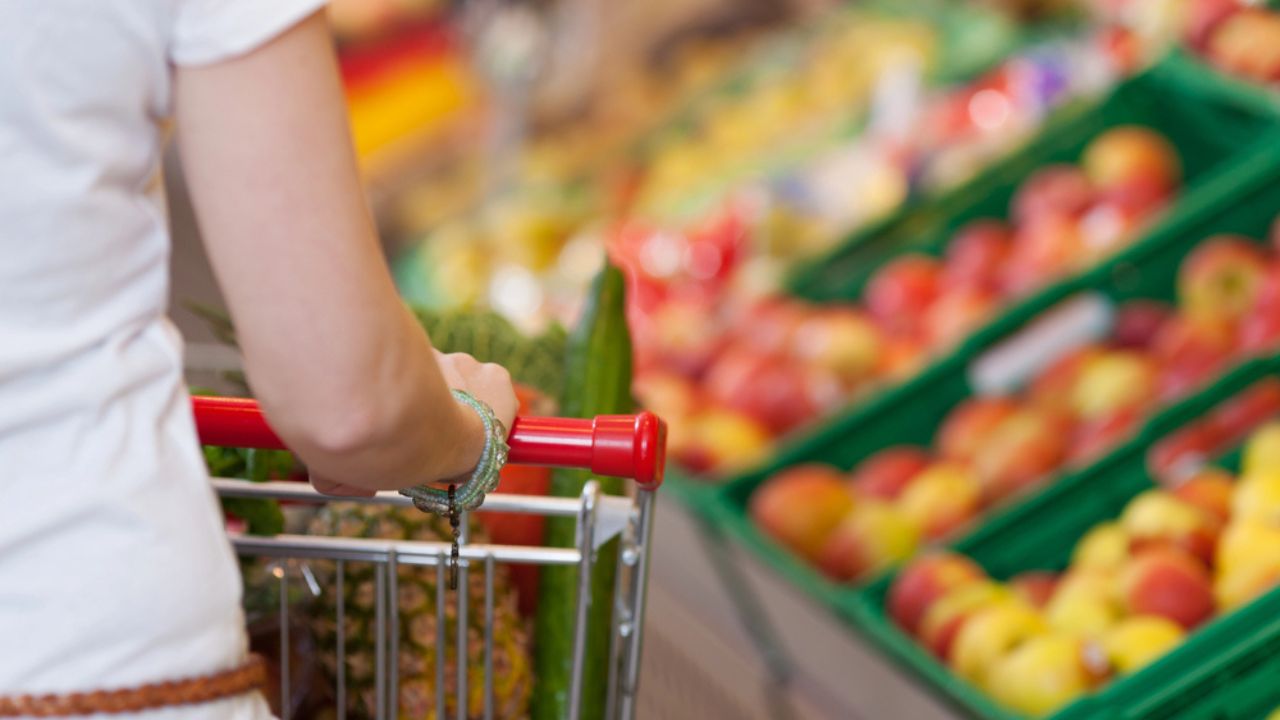
Image Credit: Depositphotos.com.
Slightly overripe bananas. Canned black-eyed peas left over from New Year’s. Bags of hamburger buns that didn’t sell. Milk or meat that’s close to its sell-by date. Supermarket managers need these things gone, and the discounts can be considerable.
These are “almost always a very good deal,” writes Katie from Frugal Mama Project. That is, if you observe two simple rules. “Make sure it’s something you will really use. And if it’s meat, eat it or freeze it that night to make sure it doesn’t go to waste.”
Pro tip: Close-dated milk works just fine for yogurt or pudding.
Little Free Pantries
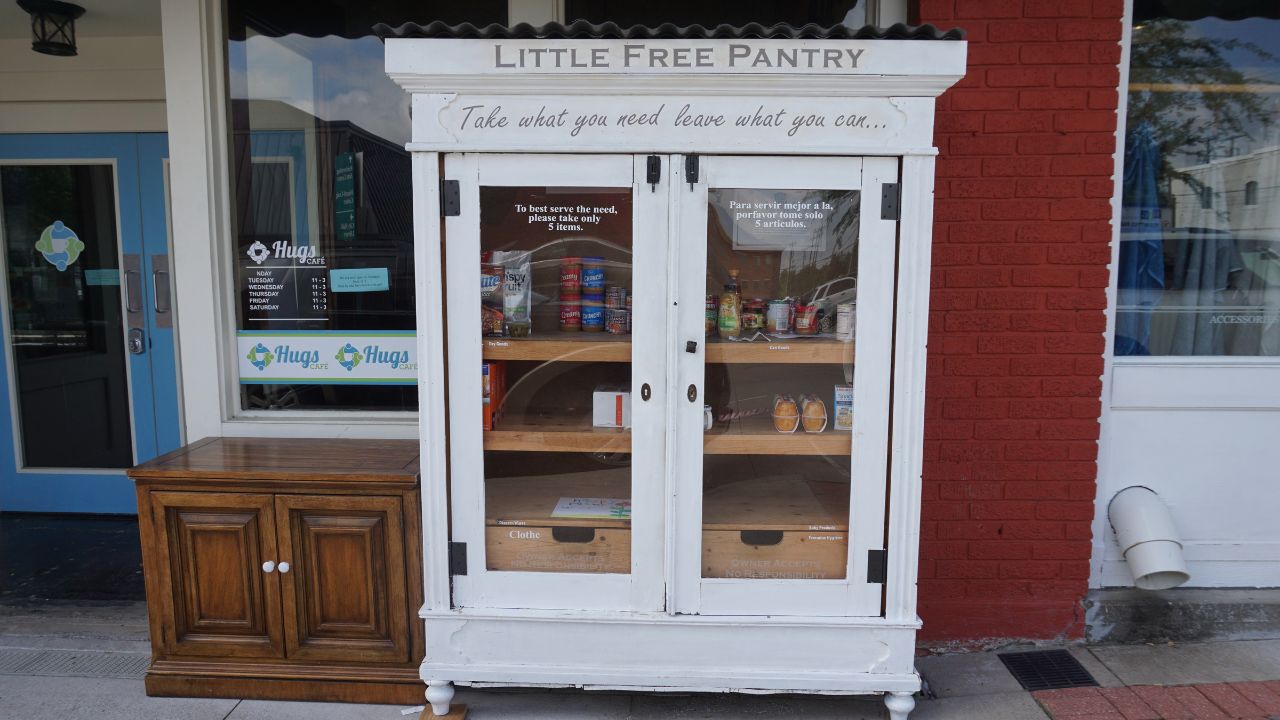
Image Credit: Michael Barera – CC BY-SA 4.0/Wiki Commons.
Maybe you’ve heard of Little Free Libraries – tiny structures filled with books for anyone to take. Little Free Pantries are based on the same idea, except they’re filled with nonperishable foods.
You might find toiletries, pet products, or even baby items if you’re lucky. And since they’re open around the clock, you can swing by anytime.
Look for these gratis groceries by searching online for “Little Free Pantry near me.” You can also check out a pair of clearinghouses: Little Free Pantries and Little Free Pantry.
Restaurant Supply Stores
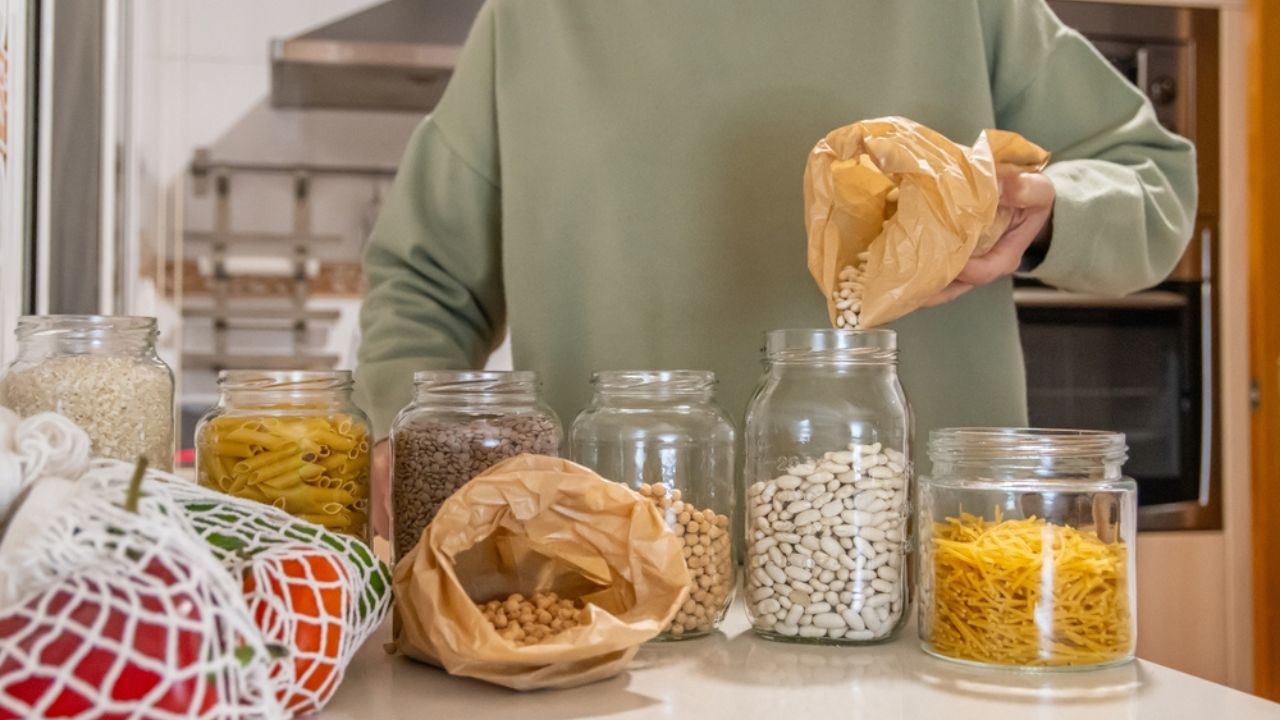
Image Credit: Shutterstock.
The ultimate “bulk buy” experience! These retailers cater to the restaurant trade, but some allow members of the public to shop there as well.
You can buy huge blocks of cheese, giant sacks of dry goods, large sacks of potatoes and onions, quart-sized jars of condiments and spices, enormous quantities of meat/poultry, and No. 10 cans of beans, veggies, and fruits.
“It beats Costco in terms of prices…This shopping strategy has saved me a ton of money, especially when they have weekly specials or clearance sales,” writes Melissa Burnell at Budget101.com.
Obviously, not everyone needs 50 pounds of flour or a quart of sriracha at a time. But you can shop with a friend or two and have a pleasant visit afterward as you divvy up the goods.
“Repackaging everything and organizing it in my freezer or cupboards takes a bit of time,” Burnell notes, “but the savings are well worth it.”
Foraging
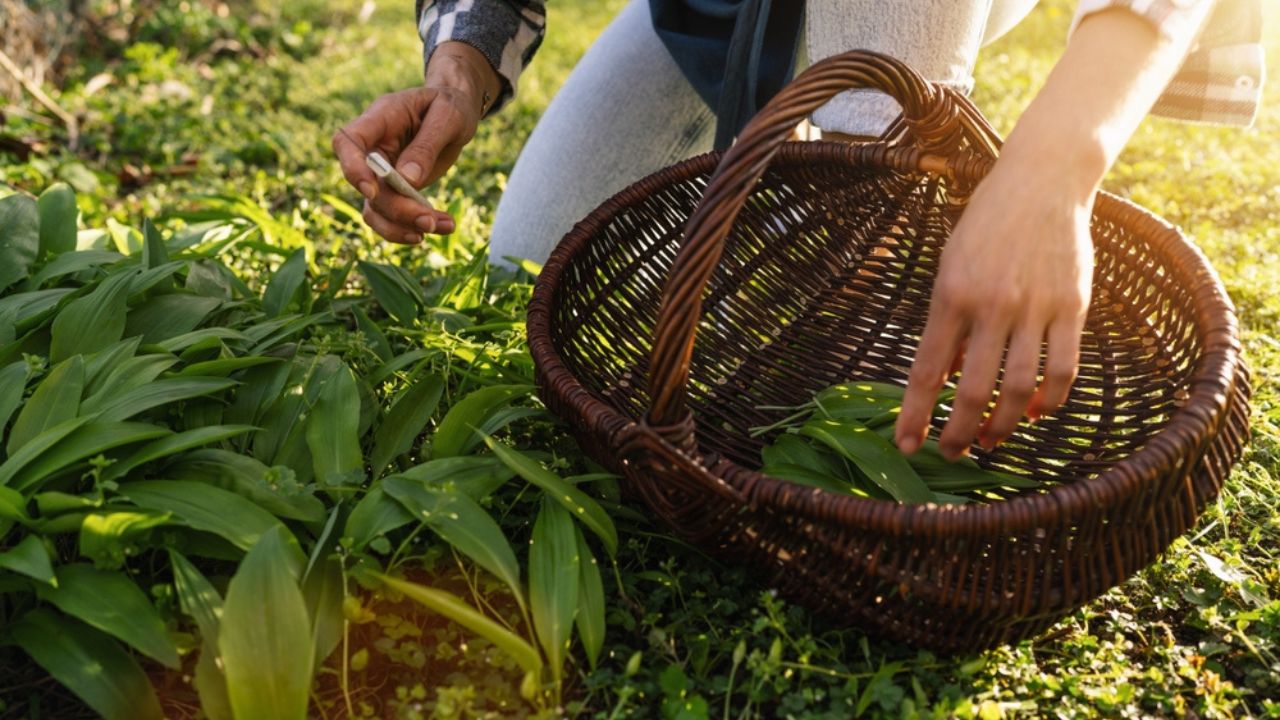
Image Credit: Shutterstock.
Our hunter-gatherer ancestors gathered food directly from the land. Some people still do, picking wild greens, mushrooms, fruits, and nuts in season.
Wild harvests aren’t limited to wild places, though. City or suburban parks, greenbelts, or even vacant lots can yield a dandelion salad or a dish of wild blackberries – the ultimate in “seasonal” and “local” eating, according to author Ellen Zachos of BackyardForager.com.
“Wild edibles are harvested at their peak, when they are most delicious and perfectly ripe. They have un-buyable flavors you won’t find on the shelf of any grocery store,” says Zachos, author of books such as “The Forager’s Pantry” and “Backyard Foraging: 65 Familiar Plants You Didn’t Know You Could Eat.”
For best-practice tips, see “Wild and Wonderful Ingredients You Can Forage to Slash Your Food Bill.”
Closely related to foraging is….
Gleaning
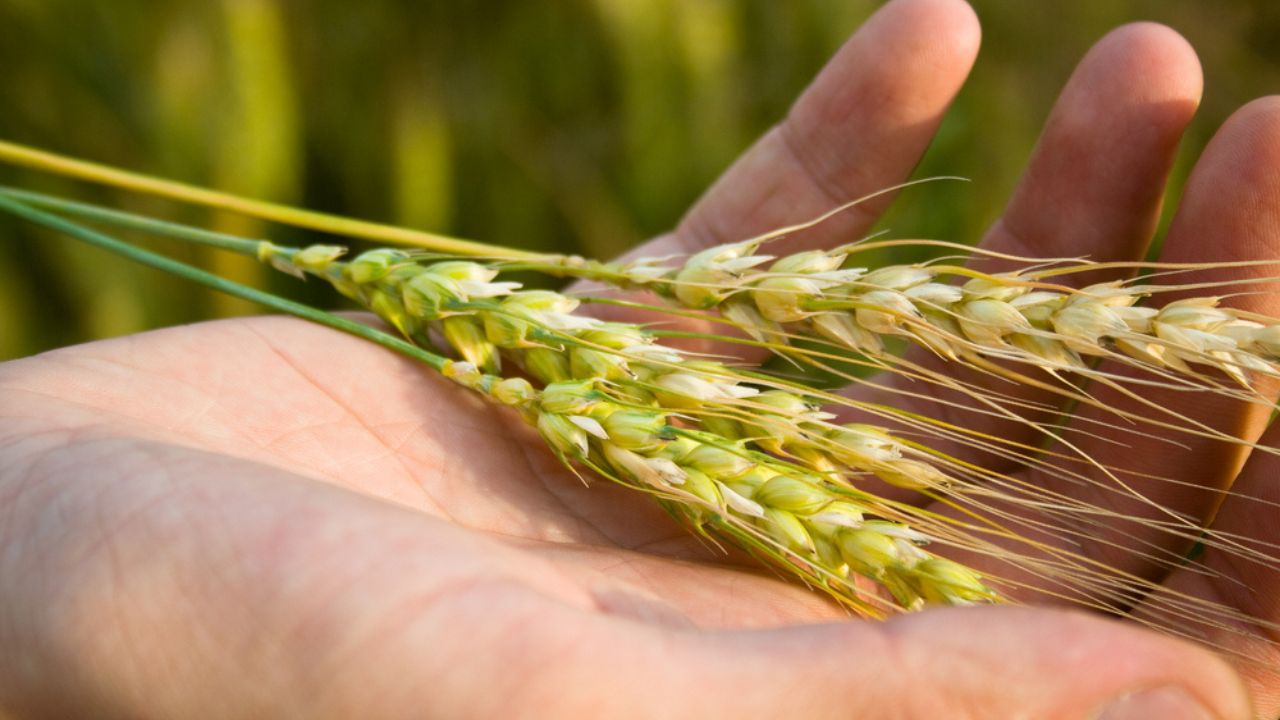
Image Credit: Shutterstock.
In Biblical times, “gleaning” meant allowing the poor to pick up missed grains or crops left behind after the harvest. These days, nonprofits are working to “recover” unused food from the fields, supermarkets, universities, wholesalers, and other locations.
Some programs offer the gleaned items outright. Others are looking for volunteers to help harvest in return for a share of the food.
Get your glean on with help from a nonprofit called Food Forward, which has compiled a list of gleaning organizations in North America. You could also search for “gleaning projects near me,” since a local program might not be listed nationally.
Here are a few to get you going:
- Fallen Fruit (maps of fruits and nuts in the Los Angeles area)
- Food For Free (direct service to Massachusetts seniors, students, and others who are food insecure)
- Falling Fruit (worldwide maps of produce plus links to organizations that distribute food)
- Village Harvest (gleaning programs in 10 U.S. states and one Canadian province)
- Portland (Oregon) Fruit Tree Project (“group harvests” organized on private property and commercial concerns)
- Urban Food Forestry (links to harvest initiatives in the U.S., Canada, and the United Kingdom)
Dollar Stores
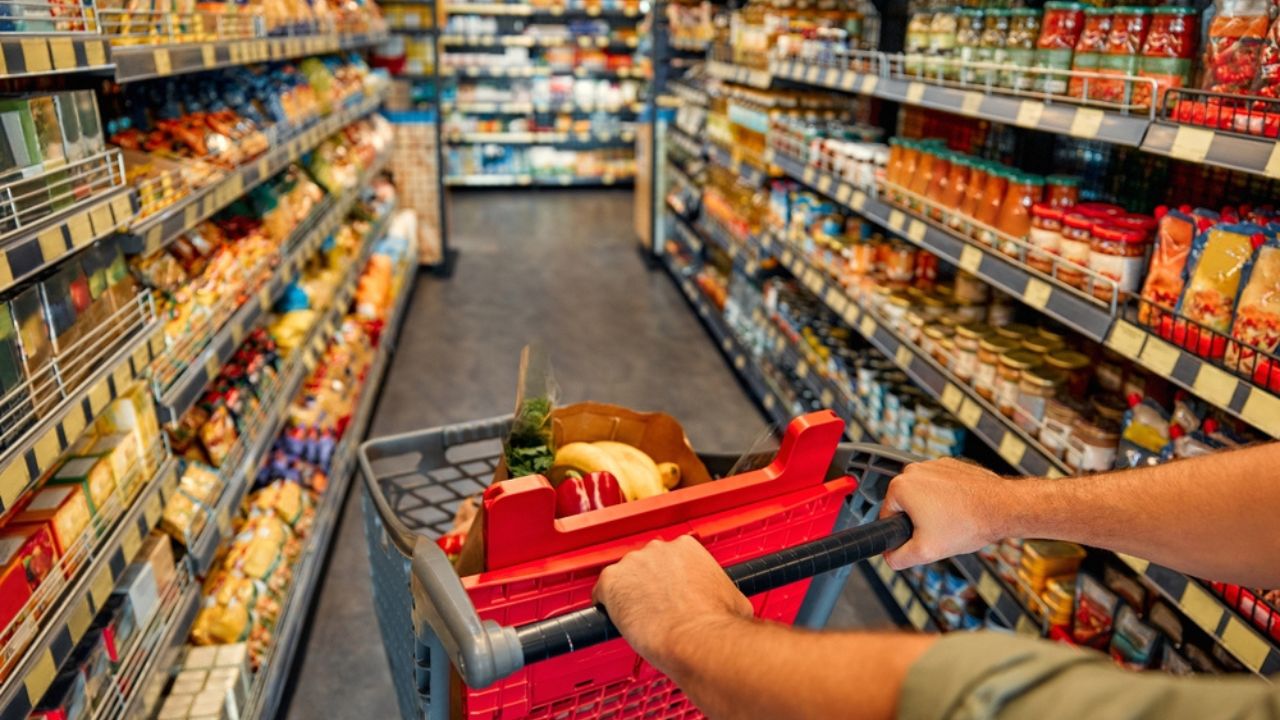
Image Credit: Shutterstock.
Dollar stores aren’t only about cheap snacks and two-for-a-buck birthday cards! You can also buy pantry staples like dry beans, rice, tea bags, spices, lentils, split peas, vinegar, pasta, canned fish, and peanut butter. (Thanks to Dollar Tree teabags, my homemade iced tea costs just 12.5 cents per gallon.)
Depending on the store, you might also find specialty items like jars of dried figs, olives, or marinated Italian vegetables. If you use artificial sweeteners or drink mixes like Wyler’s, you’ll find those as well. And, yeah, plenty of cookies, pretzels, and other treats; if you know you’ll buy them, why not buy them at the lowest price point?
Some of those items are likely cheaper at an ethnic market. But if storage space is limited, buying 10 (or 20) pounds of rice or beans at a time won’t work for you.
And are things super tight right now due to reduced work hours or an unexpected expense like car repair? “Purchasing smaller quantities of something at a lower price can get you through to the next paycheck or (the) next month,“ writes Amanda Grossman of Frugal Confessions.
Estate Sales
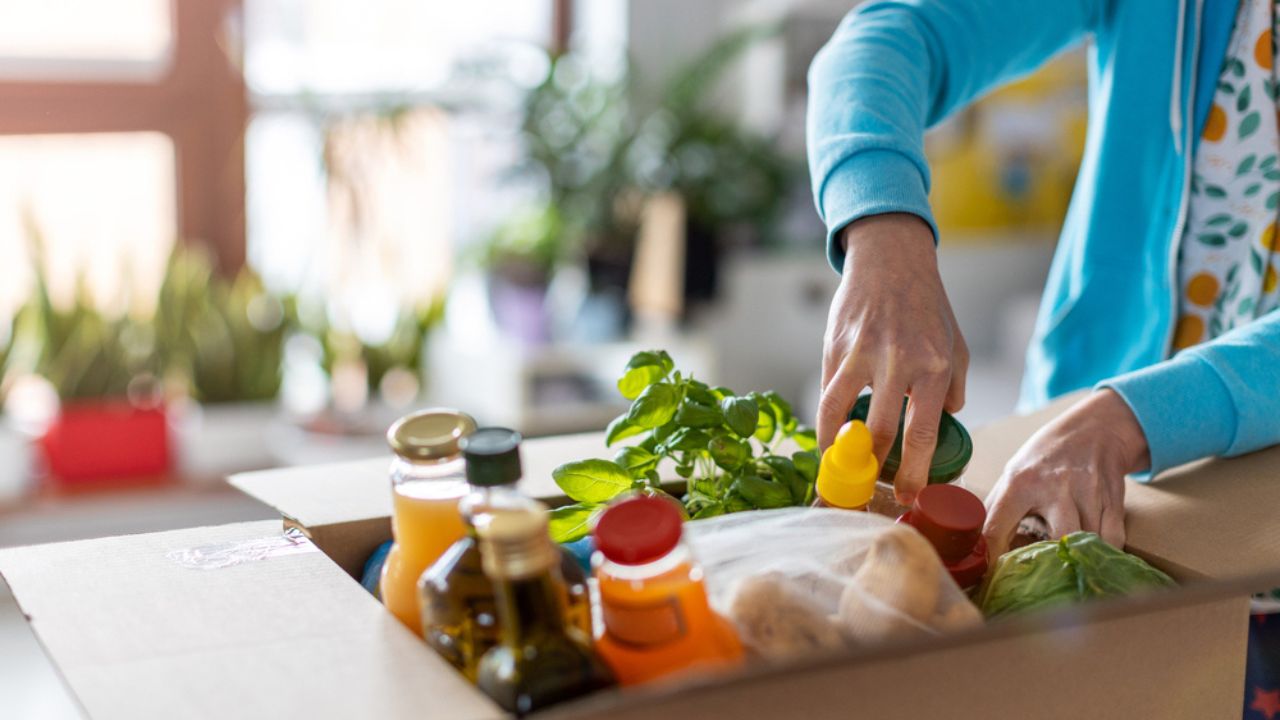
Image Credit: Shutterstock.
An estate sale is an “everything must go“ event – which may include the contents of the deceased person’s kitchen. Some items I’ve gotten for almost nothing at estate sales include canned goods, rice, cake mixes, salt, vanilla, spices, waxed paper, aluminum foil, stuffing mix, and jam.
“Fatcatleah,“ a member of Reddit’s r/Frugal community, goes straight to the pantry at any estate sale. Your mileage may vary, but Fatcatleah scores canned goods (including proteins like sardines and chicken), jarred spaghetti sauce, dried beans, pasta, salad dressing, flour, and sugar. Another community member, Immediate-Ruin2464, suggests “the real value“ is in cleaning supplies: “That stuff is super expensive.”
Sound weird or even morbid? Think of it as helping the environment along with your budget: Unsold items might be donated to a food bank, or they might end up in a landfill.
Every Penny Counts

Image Credit: Depositphotos.com.
Does that sound like something your grandma would say? Well, she’s right! Every time you spend less (or nothing) on groceries, that means more money in your pocket.
Use those savings to keep building the pantry. For example, suppose the clearance section has your favorite pasta sauce at half price. Put those savings toward an extra jar of peanut butter or some other food you eat a lot, either at the supermarket or one of the other stores mentioned above.
Baby steps like these will lead to a full cupboard for a lot less. That means a little peace of mind in these inflationary times.


